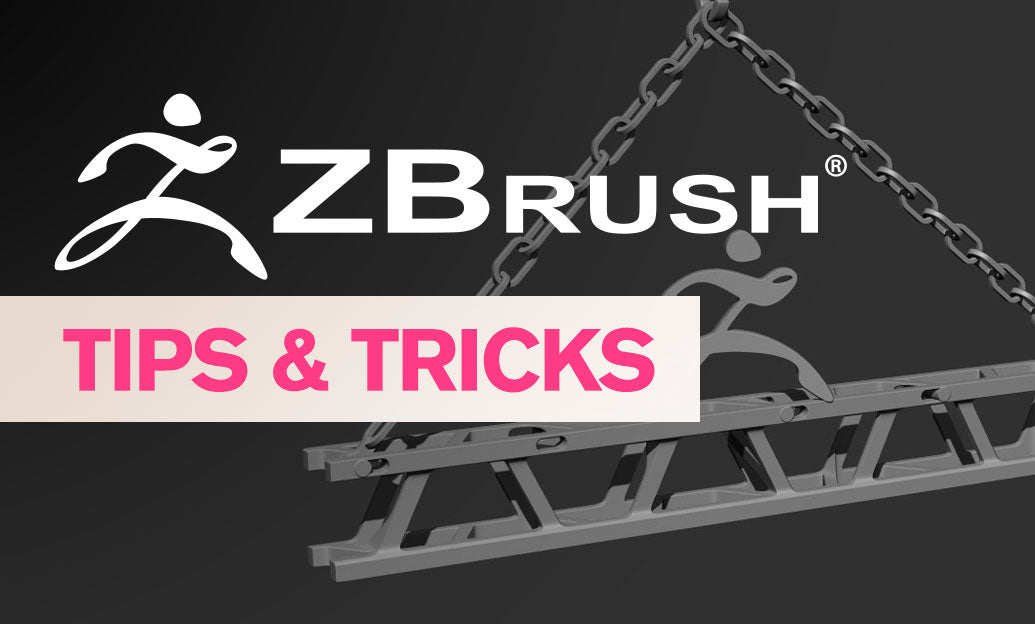Your Cart is Empty
Customer Testimonials
-
"Great customer service. The folks at Novedge were super helpful in navigating a somewhat complicated order including software upgrades and serial numbers in various stages of inactivity. They were friendly and helpful throughout the process.."
Ruben Ruckmark
"Quick & very helpful. We have been using Novedge for years and are very happy with their quick service when we need to make a purchase and excellent support resolving any issues."
Will Woodson
"Scott is the best. He reminds me about subscriptions dates, guides me in the correct direction for updates. He always responds promptly to me. He is literally the reason I continue to work with Novedge and will do so in the future."
Edward Mchugh
"Calvin Lok is “the man”. After my purchase of Sketchup 2021, he called me and provided step-by-step instructions to ease me through difficulties I was having with the setup of my new software."
Mike Borzage
Design Software History: The Evolution of T-Splines: Transforming Organic Modeling in Design Software
September 20, 2024 5 min read


Introduction to T-Splines and Their Importance in Organic Modeling
Overview of Organic Modeling
Organic modeling refers to the creation of complex, freeform shapes that are often found in natural organisms. This technique is essential in various fields such as medical imaging, animation, and industrial design, allowing for the creation of realistic and intricate models. Unlike traditional geometric modeling, organic modeling captures the nuances of natural forms, making it particularly valuable in applications requiring high fidelity to real-world anatomy and textures.
When comparing organic modeling to other techniques like NURBS (Non-Uniform Rational B-Splines) and polygonal modeling, several differences come to light:
- NURBS: Ideal for precise, mathematically defined surfaces. Commonly used in automotive and aerospace industries for designing smooth, high-quality surfaces.
- Polygonal Modeling: Utilizes polygons to construct 3D models. Widely used in gaming and animation due to its flexibility and ease of manipulation.
- Organic Modeling: Focuses on creating naturally varying shapes. Employed in industries requiring detailed, lifelike representations, such as biomedical engineering and character design.
Introduction to T-Splines
T-Splines, a mathematical representation technique, originated as a solution to the limitations faced by NURBS and polygonal modeling. Invented by Dr. Thomas W. Sederberg at Brigham Young University, T-Splines offer a powerful alternative that bridges the gap between precise surface control and the flexibility required for organic modeling.
Unlike traditional methods, T-Splines allow for the seamless integration of multiple surface patches without introducing complex surface junctions. This technology enables designers to create intricate, organic shapes with fewer control points and greater ease. The ability to localize detail without affecting the entire model is one of its standout features, making it particularly advantageous over traditional NURBS and polygonal models.
The Development and Evolution of T-Splines
Early Research and Theoretical Foundations
The theoretical foundations of T-Splines can be traced back to the pioneering work of Dr. Thomas W. Sederberg and his colleagues. Their initial research, conducted in the early 2000s, focused on overcoming the limitations of traditional surface modeling techniques. Key academic papers such as "T-Splines and T-NURCCs" introduced the concept to the scientific community, laying the groundwork for future innovations.
Among the notable contributors to the development of T-Splines were Dr. Falai Chen and Dr. Qiuyan Wang, who provided significant insights into the mathematical underpinnings and computational methods required to implement T-Splines effectively. Their collaborative efforts with Dr. Sederberg's team were instrumental in advancing the technology from a theoretical concept to a practical tool.
Commercialization and Industry Adoption
The commercialization of T-Splines marked a significant milestone in its evolution. One of the early pioneers in this regard was T-Splines, Inc., co-founded by Dr. Sederberg. The company focused on developing software solutions that leveraged T-Splines for various design applications. By integrating T-Splines into popular design software such as Rhino and SolidWorks, they facilitated widespread industry adoption.
Rhino, a 3D computer graphics and computer-aided design (CAD) application, was among the first to incorporate T-Splines. This integration allowed users to create smooth, organic shapes with unprecedented ease. Similarly, SolidWorks, a widely used CAD software in engineering and product design, benefited from the enhanced flexibility and precision offered by T-Splines.
Technological Advancements
Over the years, technological advancements have significantly enhanced the capabilities of T-Splines. Improvements in algorithms and computational methods have made T-Splines more efficient and robust. For instance, the development of adaptive refinement techniques has allowed for better handling of complex shapes and finer control over surface details.
Additionally, enhancements in software capabilities and user interfaces have made T-Splines more accessible to designers and engineers. Modern design software now includes intuitive tools and interactive features that simplify the process of creating and manipulating T-Spline models. These advancements have expanded the range of applications and increased the adoption of T-Splines across various industries.
Key Applications and Case Studies
Industries Benefiting from T-Splines
T-Splines have found applications in a wide range of industries, thanks to their ability to create complex, organic shapes with precision and ease. Some of the key industries that benefit from T-Splines include:
- Automotive Design: T-Splines enable the creation of smooth, aerodynamic surfaces that are essential for modern vehicle designs. Automotive designers use T-Splines to model car bodies, interiors, and other components with high accuracy.
- Aerospace Engineering: In aerospace engineering, T-Splines facilitate the design of complex aerodynamic surfaces, such as aircraft fuselages and wings. Their ability to handle intricate geometries makes them invaluable for optimizing performance and reducing drag.
- Consumer Product Design: T-Splines are widely used in the design of consumer products, including electronics, appliances, and sports equipment. Their flexibility allows designers to create innovative and ergonomic shapes that enhance user experience.
Notable Projects and Success Stories
The effectiveness of T-Splines in real-world scenarios is evident from numerous success stories and testimonials from industry professionals and academic researchers. These accounts highlight the transformative impact of T-Splines on design processes and outcomes.
One notable example is the use of T-Splines in the development of advanced medical devices. Researchers and engineers have leveraged T-Splines to create detailed anatomical models that are crucial for surgical planning and prosthetic design. The ability to accurately represent complex biological structures has significantly improved the efficacy of these medical solutions.
Testimonials from industry professionals further underscore the value of T-Splines. Designers and engineers have praised the technology for its ability to streamline workflows and enhance creativity. By reducing the time and effort required to create intricate shapes, T-Splines have enabled professionals to focus on innovation and optimization.
Future Trends and Innovations
Potential Future Developments
The future of T-Splines is poised for exciting developments, driven by advancements in related technologies and evolving industry needs. One of the potential future developments is the integration of T-Splines with artificial intelligence (AI) and machine learning. AI algorithms can enhance the capabilities of T-Splines by automating certain aspects of the design process, such as shape optimization and error correction.
Another promising trend is the development of enhanced real-time collaboration tools. With the increasing importance of remote work and global collaboration, there is a growing demand for tools that allow multiple users to work on T-Spline models simultaneously. These tools can facilitate seamless communication and coordination among design teams, leading to more efficient and innovative outcomes.
Challenges and Opportunities
Despite the numerous advantages of T-Splines, there are still technical hurdles to overcome. One of the primary challenges is the computational complexity associated with handling large and intricate T-Spline models. As models become more detailed, the computational resources required to process them increase, posing a challenge for real-time applications.
However, these challenges also present opportunities for innovation. Emerging fields such as biomedical engineering and sustainable design offer new avenues for the application of T-Splines. In biomedical engineering, T-Splines can be used to create patient-specific implants and prosthetics, improving the precision and effectiveness of medical treatments. In sustainable design, T-Splines can facilitate the creation of energy-efficient and environmentally friendly products.
Conclusion
In conclusion, T-Splines have revolutionized the field of organic modeling by providing a powerful and flexible tool for creating complex shapes. From their theoretical foundations to their widespread adoption in various industries, T-Splines have demonstrated their value in enhancing design processes and outcomes. As we look to the future, the continued evolution of T-Splines, driven by technological advancements and emerging applications, promises to further advance the field of design technology.
Also in Design News

ZBrush Tip: Maximizing Sculpting Precision with ZBrush Morph Targets: Essential Tips and Techniques
November 25, 2024 2 min read
Read More
V-Ray Tip: Mastering V-Ray Shadow Catcher for Seamless 3D Compositing
November 25, 2024 2 min read
Read More
AutoCAD Tip: Streamline AutoCAD Workflows with LISP Routines for Enhanced Productivity
November 25, 2024 2 min read
Read MoreSubscribe
Sign up to get the latest on sales, new releases and more …


